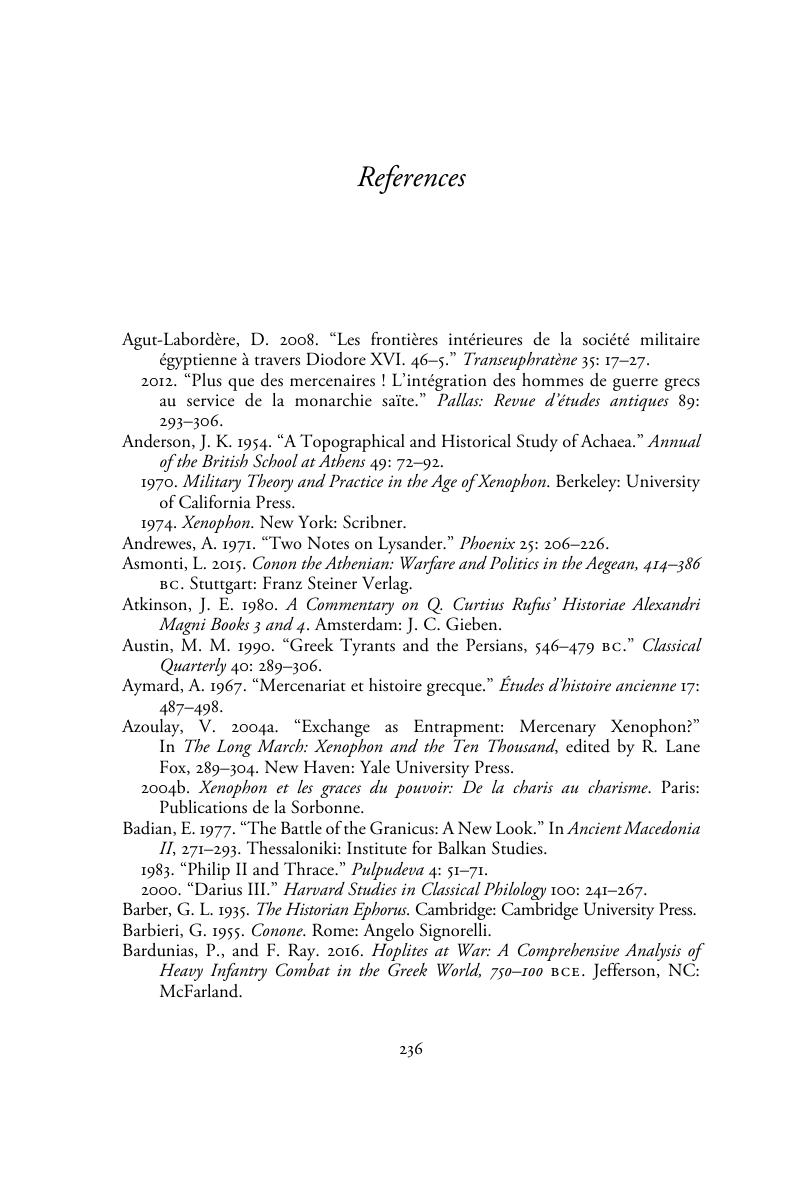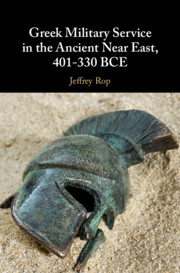Book contents
- Greek Military Service in the Ancient Near East, 401–330 bce
- Greek Military Service in the Ancient Near East, 401–330 bce
- Copyright page
- Dedication
- Contents
- Figures
- Maps
- Tables
- Preface
- Acknowledgments
- Timeline
- Maps
- Chapter 1 The Greek Thesis
- Chapter 2 The Battle of Cunaxa
- Chapter 3 Greece and the Rebellion of Cyrus the Younger
- Chapter 4 Greeks in Persia and Egypt, ca. 400–360
- Chapter 5 The Revolt of Artabazus
- Chapter 6 The Persian Conquest of Egypt
- Chapter 7 The Greco-Persian Defense of Western Anatolia
- Chapter 8 The Fall of the Achaemenid Persian Empire
- Conclusion: The Other Persian Wars
- References
- Index
- References
References
Published online by Cambridge University Press: 10 June 2019
- Greek Military Service in the Ancient Near East, 401–330 bce
- Greek Military Service in the Ancient Near East, 401–330 bce
- Copyright page
- Dedication
- Contents
- Figures
- Maps
- Tables
- Preface
- Acknowledgments
- Timeline
- Maps
- Chapter 1 The Greek Thesis
- Chapter 2 The Battle of Cunaxa
- Chapter 3 Greece and the Rebellion of Cyrus the Younger
- Chapter 4 Greeks in Persia and Egypt, ca. 400–360
- Chapter 5 The Revolt of Artabazus
- Chapter 6 The Persian Conquest of Egypt
- Chapter 7 The Greco-Persian Defense of Western Anatolia
- Chapter 8 The Fall of the Achaemenid Persian Empire
- Conclusion: The Other Persian Wars
- References
- Index
- References
Summary

- Type
- Chapter
- Information
- Greek Military Service in the Ancient Near East, 401–330 BCE , pp. 236 - 257Publisher: Cambridge University PressPrint publication year: 2019



